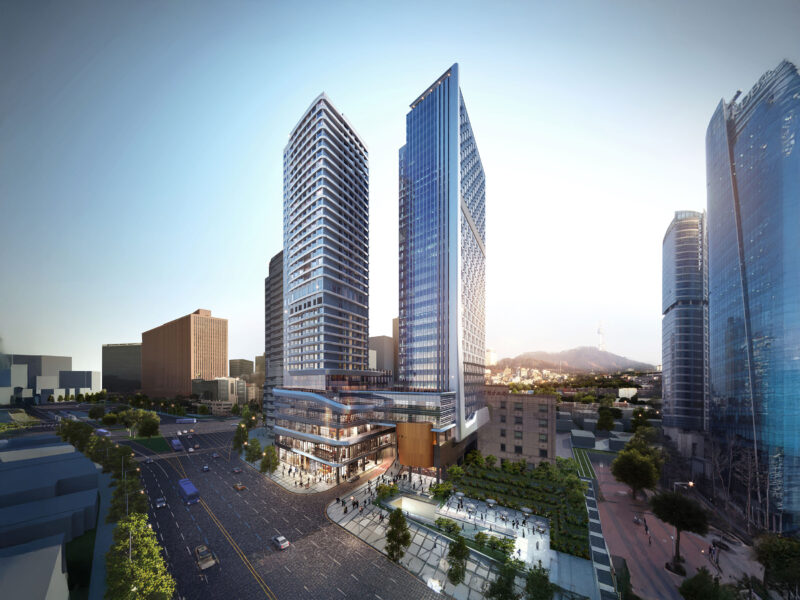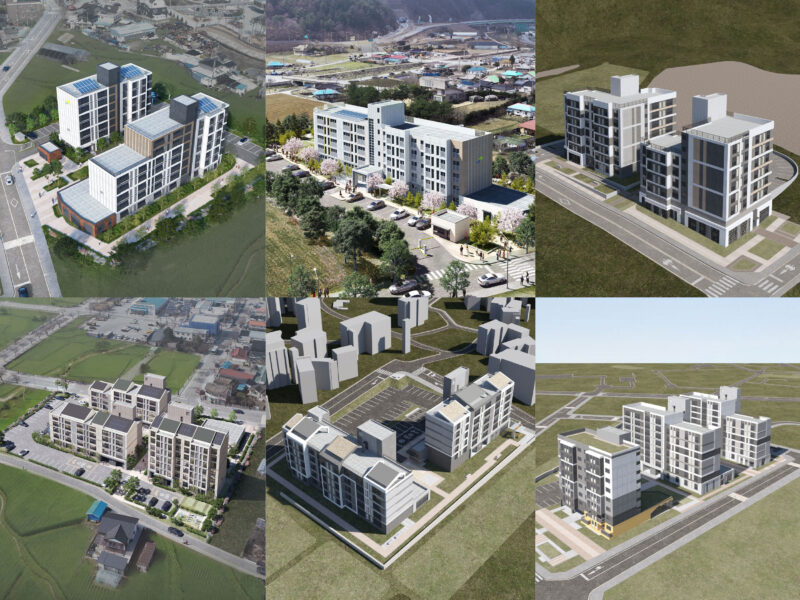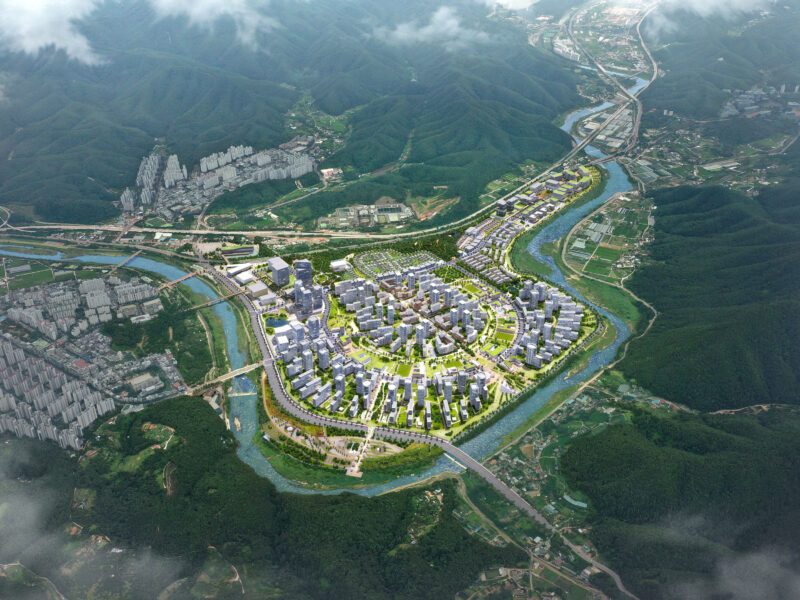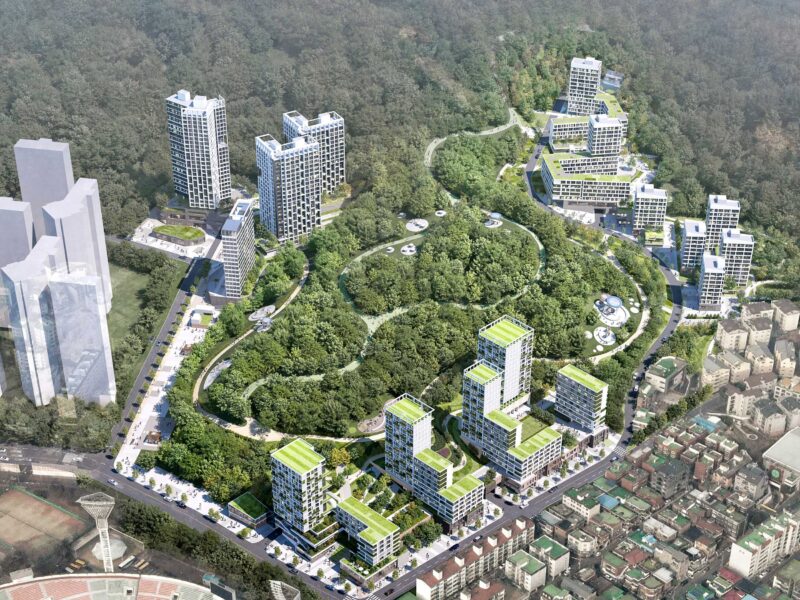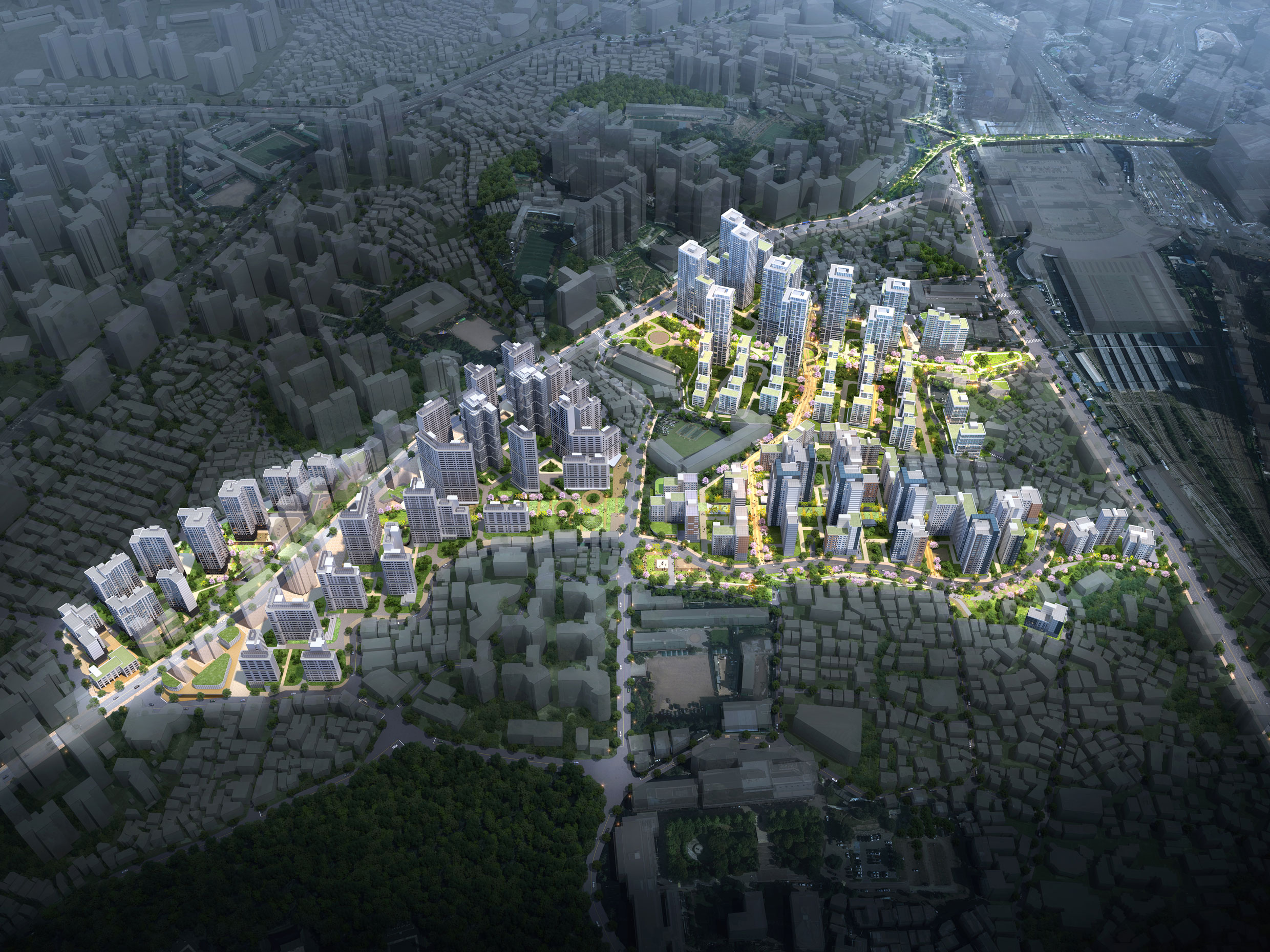
The Seoul Metropolitan Government’s Rapid Integrated Planning initiative is a public support program designed to accelerate redevelopment and reconstruction projects. It sets guidelines that balance public interest with business feasibility during the private-sector-driven improvement planning phase, while streamlining project procedures and easing planning standards accordingly. The selected project site, encompassing the area around 33 Seogye-dong in Yongsan-gu, adjoins Seoul Station and the National Theater Company of Korea. It lies at the intersection of several administrative districts — including Cheongpa-dong and Malli-dong — forming a central residential area and dynamic district where housing, commercial, and office facilities coexist amid multiple ongoing development projects. Through this rapid integrated planning, the project aims to realize the site’s potential by overcoming existing challenges, transforming it into a renewed district that focuses on creative cityscape design based on local topography and secures public value through connections with nearby infrastructure. Key strategies include inserting linear green corridors and public walkways across the site, placing public facilities as anchor spaces, and applying residential zoning distinctions according to topographic elevation.
The linear green corridors, public walkways, and central plaza together link the neighborhood and create an open spatial structure where residents can interact, providing a pleasant, eco-friendly green infrastructure. The community network is established by distributing facilities along the green corridors and walkways. Placed at the entrances to the green corridors, public facilities are designed to connect with the nearby National Theater Company and local cultural assets, serving as anchor points for the local community. For the residential complex, the design minimizes the level differences of hilly terrain with four adaptive zoning types — urban landscape, tailored urban, school-linked, and hillside landscape — each imparting unique characteristics to its zone. The plan is expected to offer “village communication paths” supporting vibrant everyday life and a walkable landscape that encourages residents to explore and connect within Seogye.
In The Press
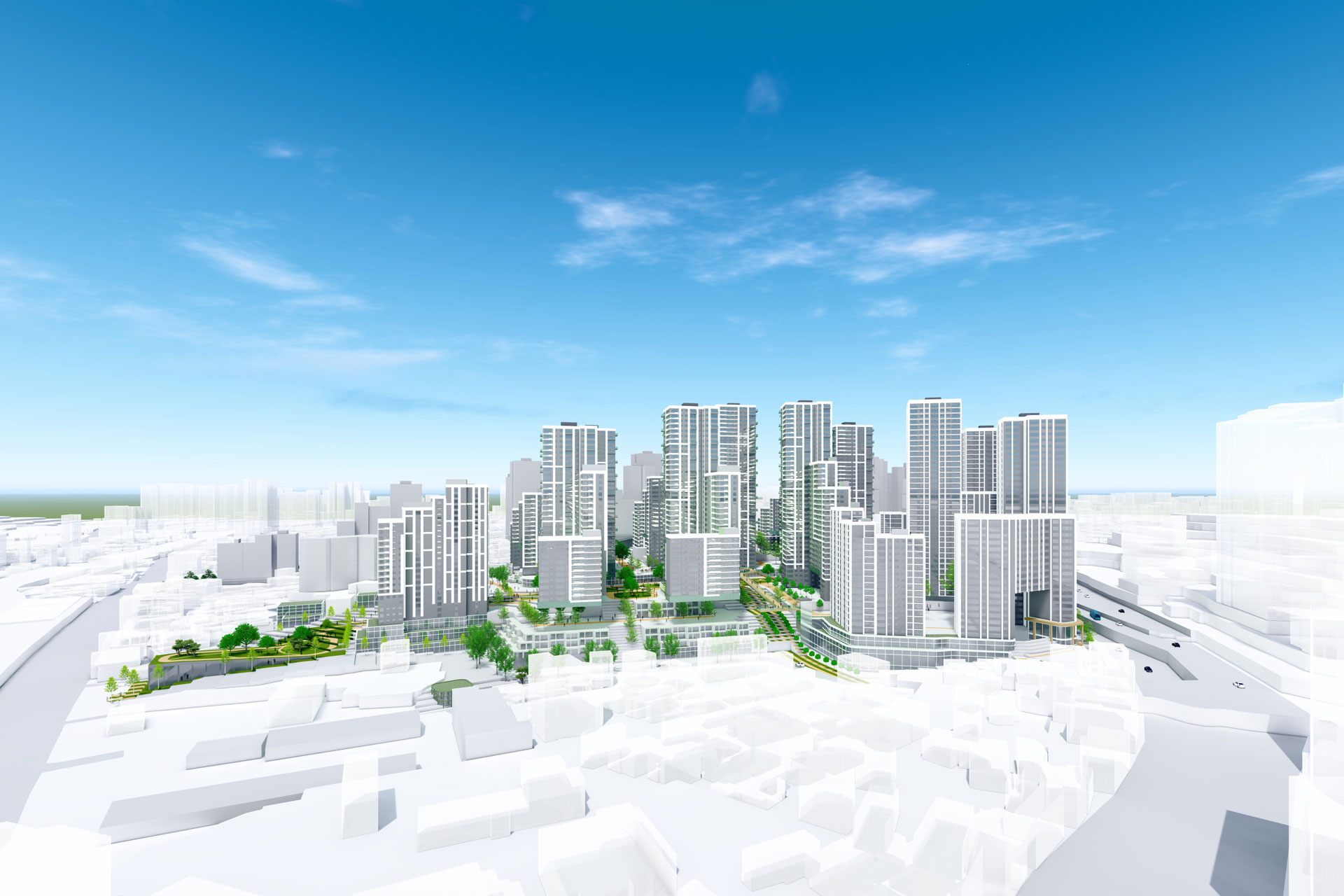
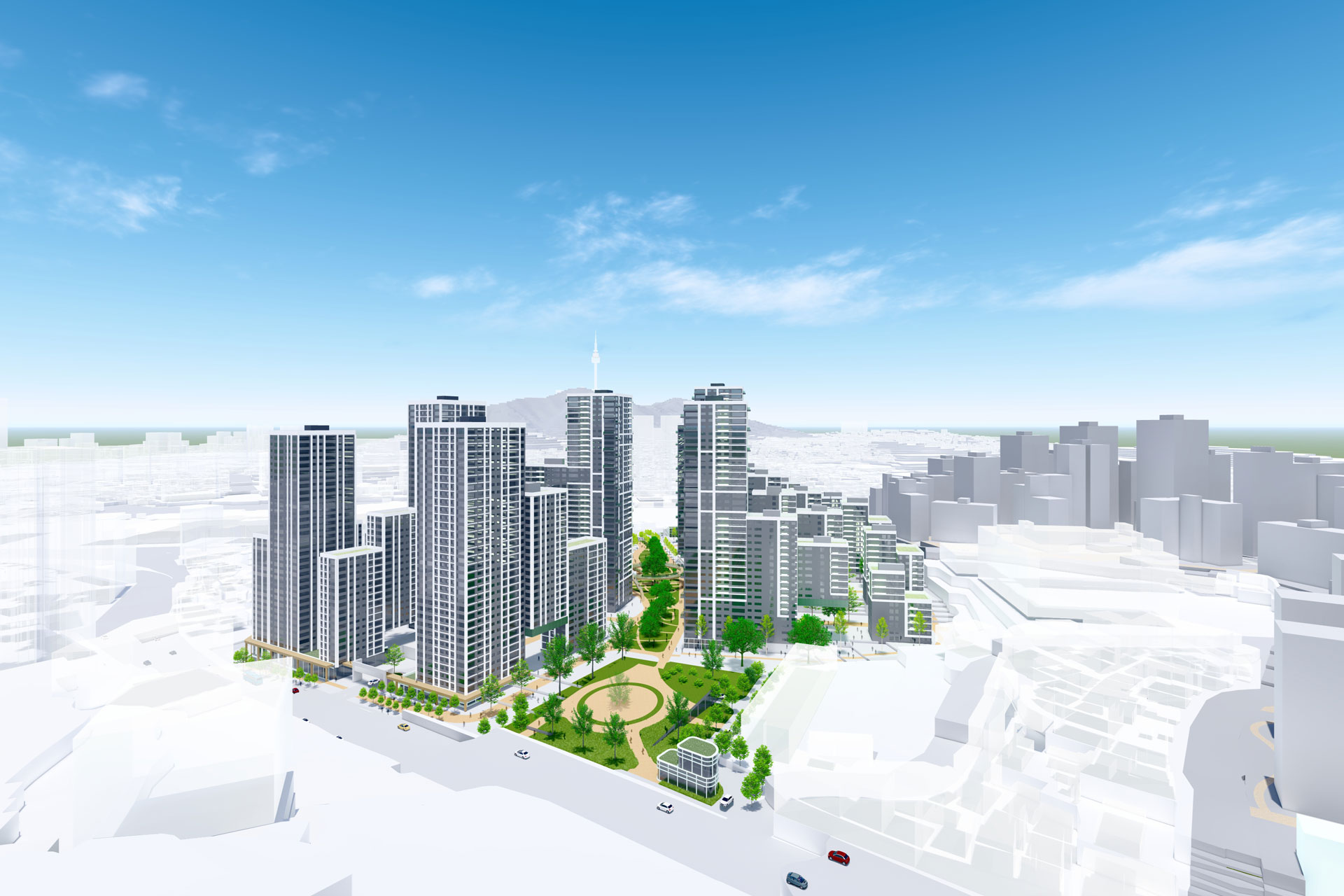

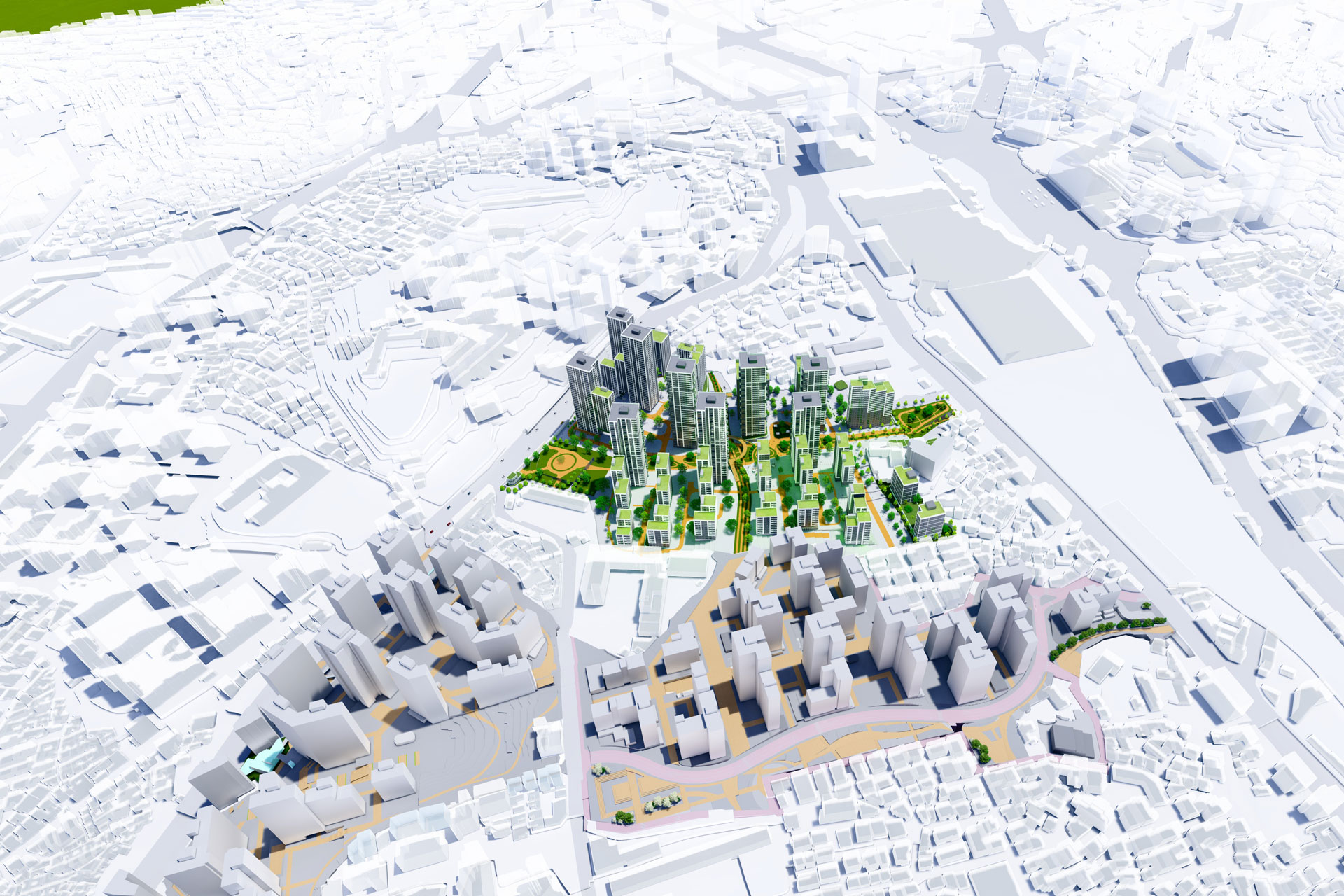
-
Status
In Progress
-
Client
Seoul Metropolitan Government's Rapid Integration Planning Division
-
Program
Urban Design & Planning, Public, Residential
-
Design Year
2023
-
Location
Yongsan-gu, Seoul
-
Site area
112,599m2
-
Gross Floor Area
343,179.36m2
-
Building Area
18,577.18m2
-
Number of Levels
B2, 25F (About 2,500 households)
-
Design
-
Participants
The Seoul Metropolitan Government’s Rapid Integrated Planning initiative is a public support program designed to accelerate redevelopment and reconstruction projects. It sets guidelines that balance public interest with business feasibility during the private-sector-driven improvement planning phase, while streamlining project procedures and easing planning standards accordingly. The selected project site, encompassing the area around 33 Seogye-dong in Yongsan-gu, adjoins Seoul Station and the National Theater Company of Korea. It lies at the intersection of several administrative districts — including Cheongpa-dong and Malli-dong — forming a central residential area and dynamic district where housing, commercial, and office facilities coexist amid multiple ongoing development projects. Through this rapid integrated planning, the project aims to realize the site’s potential by overcoming existing challenges, transforming it into a renewed district that focuses on creative cityscape design based on local topography and secures public value through connections with nearby infrastructure. Key strategies include inserting linear green corridors and public walkways across the site, placing public facilities as anchor spaces, and applying residential zoning distinctions according to topographic elevation.
The linear green corridors, public walkways, and central plaza together link the neighborhood and create an open spatial structure where residents can interact, providing a pleasant, eco-friendly green infrastructure. The community network is established by distributing facilities along the green corridors and walkways. Placed at the entrances to the green corridors, public facilities are designed to connect with the nearby National Theater Company and local cultural assets, serving as anchor points for the local community. For the residential complex, the design minimizes the level differences of hilly terrain with four adaptive zoning types — urban landscape, tailored urban, school-linked, and hillside landscape — each imparting unique characteristics to its zone. The plan is expected to offer “village communication paths” supporting vibrant everyday life and a walkable landscape that encourages residents to explore and connect within Seogye.
In The Press






